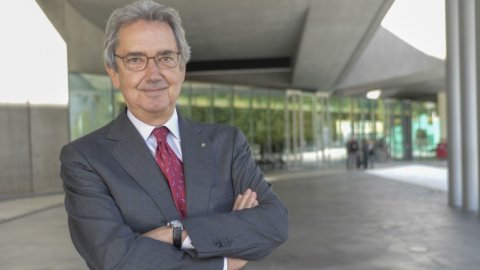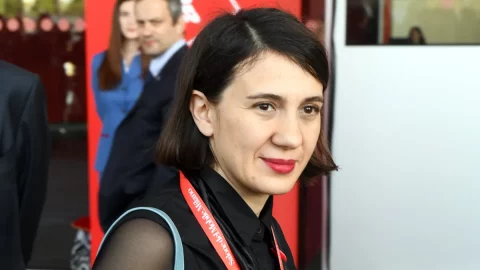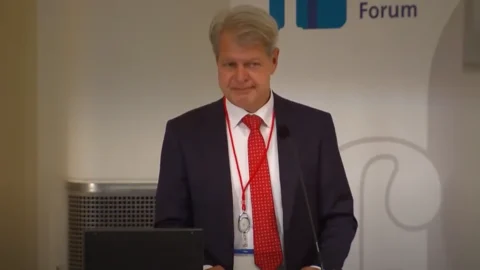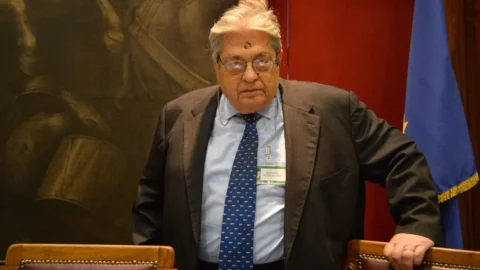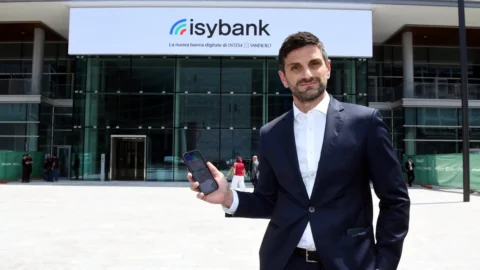La Quadrennial of art in Rome has recently been inaugurated and Franco Bernabe, a long-time manager who became president in April 2015, is already looking to the future. “Four years is too long: the goal is to give it an important role in promoting contemporary Italian art in the world”. Not just a four-year exhibition, therefore, but a permanently active institution. There is a need, as he himself explains in this interview with FIRSTonline, because the other art capitals, such as London, Paris, New York and Berlin are a launch pad for young artists and a point of reference for the international market of exhibitions and great collectors. But Rome, despite the municipal political vicissitudes, has many cards to play and a constantly and, in some ways, surprisingly growing pool of potential visitors. We are therefore thinking of creating a circuit of proposals that will have the Quadrennial and the Palazzo delle Esposizioni as a pivot but which will be able to move in synergy with other large public museums such as the Maxxi and the Gallery of Modern Art, fresh from a new layout. And then contributions may also arrive from private galleries, such as Gagosian for example.
So it's forbidden to feel sorry for yourself. It starts again from "Q16" which is not a chemical formula or even a new IQ but the synthesis of the sixteenth edition of the Quadrennial, inaugurated on 13 October to remain open until 8 January 2017. After eight years of stalemate, 2016 is the year of the relaunch, whose numbers are summarized as follows: 11 curators, 99 artists, 150 works, 2.000 square meters of exhibition divided into ten sections. The works are all subsequent to the year XNUMX, many were created for the occasion. Works to observe, to listen to, to project and many "events" and meetings to animate and compose the mosaic of Italian contemporary art.
Dr. Bernabè, in your long career as a manager, you got to know the art world as president of the Venice Biennale from 2001 to 2003 and as president of Palaexpo in 2014. What is the Rome Quadriennale and what is is the panorama of contemporary art in Italy? Are there risks of overlapping with other major events around the Bel Paese?
“There is no risk of overlapping whatsoever. The Venice Biennale has an international vocation, the Milan Triennale - which has also remained stationary for a long time - is dedicated to design. The Rome Quadrennial was born in 1927 to favor the selection of Italian artists and promote their activities. Beyond the rhetoric of the Ventennio, it has kept a basic motivation and was revived in the post-war period. 2016 was a year in which we saw a real explosion of initiatives in the field of visual arts with the Biennale, Triennale and Quadriennale opening just over a week ago. As part of this relaunch of initiatives in the cultural field, strongly desired by Minister Dario Franceschini, I was asked to revitalize the Quadriennale precisely. It is a task that I took on with great commitment and interest: the ministry refinanced us with one million euros but I recovered another million euros from private partners. Without their contribution, the exhibition could not have been held”.
Eni, Terna, BMW, Bper, Grandi Stazioni retail, Axa, Illy, Fondazione Allagammo, Hotel de Russie, Ferrovie dello Stato: I take the names of the sponsors from the official press release. What binds them to art?
“The Quadriennale is a sophisticated operation, with a qualified, young public and the participation of opinion leaders. All of this affects those who supported us. And then we didn't follow the path of a generic sponsorship but that of creating a project for each partner. And so Eni has carried out an initiative strongly connected with schools and aimed at 16 to 25 year olds, supported by an advertising campaign and has focused on visibility by the younger public. BMW Italia is present with the Art Car created by Sandro Chia. Axa has launched a process that started from Art Basel 2016 and will hold its annual Forum in a few days at the Palazzo delle Esposizioni. The reason is that the Quadriennale projects Italy into the future and the future interests everyone”.
Yet Rome doesn't exactly have the image of a city projected forward, even from an artistic-tourist point of view there has been talk of overtaking by Milan...
“There has been a lot of attention recently on Milan but, on the contrary, it is above all Rome that is experiencing a strong revival in terms of art. In ten years the capital has gone from 9 and a half million in 2005 to over 18 million visitors today in state museums and archaeological sites. An impressive leap. Furthermore, I point out that Rome alone has three times the number of visitors of all the Italian cities of art combined. Whatever people say and despite the Italian tendency to feel sorry for themselves, it is a great success. Furthermore, if previously they came to Rome above all for the art and ancient monuments, the Quadriennale has contributed to revitalizing the city's appeal for contemporary art, attracting not only Italian but also foreign visitors, experts and collectors of international level”.
But does it make sense, in an increasingly open and globalized world, to have an exhibition dedicated only to Italian artists?
"Absolutely yes. Not only because contemporary artistic activity is concentrated in cities such as London, Paris, Berlin and New York; but also because exhibitions, collectors and the market meet there in a much more dynamic way. Our artists, if they want to have a stage, must go outside. Our mission is precisely to promote Italian art and give visibility especially to the younger ones, attracting investors here. We saw it on the evening of the opening: 3.500 people attended, with a large number of experts and collectors of international standing. We are happy about it and we are the first to be amazed by the turnout in these first few days”.
Is it too early to give some numbers on visitors?
"Decidedly. In general I can say that we don't focus on large numbers of popular exhibitions but on a very select public, with a strong component of opinion leaders. All the curators of the exhibition are between 30 and 40 years old, they have chosen artists of the same age group with works created from the XNUMXs onwards. And for this reason they are all projected into the future”.
What is the leitmotif of the works?
“I'll tell you: I expected young artists to have an attitude of rebellion and protest-oriented projects. Quite the opposite. Here is an incredible explosion of vitality and creativity, oriented towards the positive. The very title of the exhibition – “Other times, other myths”, taken from the writer Pier Vittorio Tondelli – is the symbol of a widespread Italy, with artists coming from all areas of the country and expressing a positive reality. There is truly a sense of what Italy can do in the future”.

